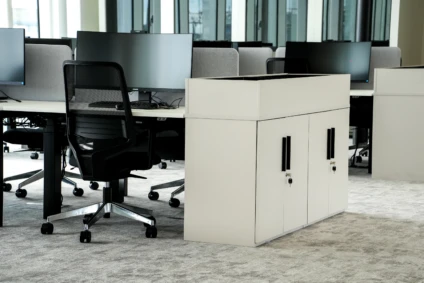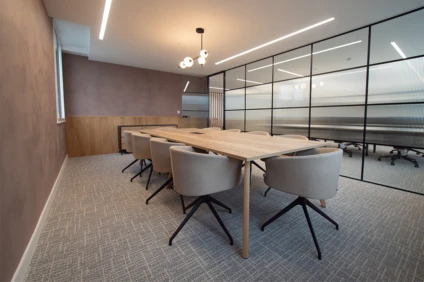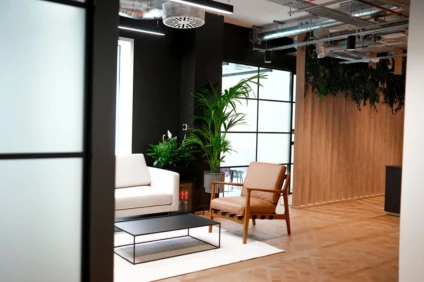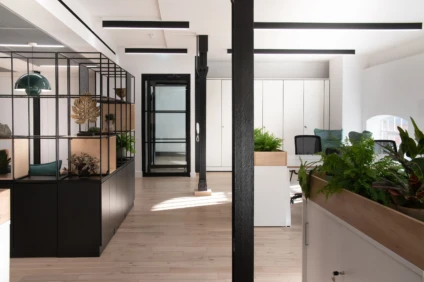MATERIALS WE SWEAR BY
OPEN PLAN OFFICES ARE OUT… AGAIN
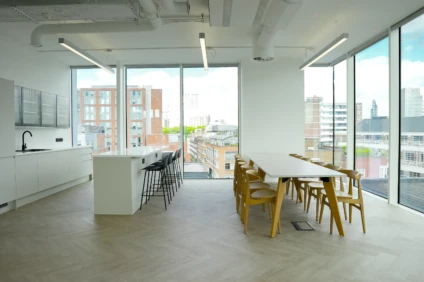
Open plan offices were once the poster child for collaboration. No walls! No hierarchy! Just acres of desks and the occasional breakout sofa to show we’re all friends here. But fast forward to 2025, and it’s clear: the honeymoon is well and truly over.
If you’re rethinking your office layout, you’re not alone — many companies are now actively searching for alternatives to open plan offices that better reflect the way people actually work.
In this article, we explore why open plan doesn’t work for most teams anymore, and what modern office design should look like instead.
Why Open Plan Offices Don’t Work for Most Teams
Let’s be honest: open plan offices were never designed for deep focus, privacy, or neurodiverse needs. Yet for years, businesses rolled them out en masse, hoping to drive culture and productivity with fewer walls and more visibility.
In reality, what we got was:
- Increased noise and distraction
- A lack of confidentiality for sensitive conversations
- A mismatch between space and task
- Lower employee satisfaction, particularly among hybrid and neurodiverse teams
Studies now show that collaboration doesn't increase just because people sit near each other. In fact, too much openness can have the opposite effect, causing employees to withdraw, wear noise-cancelling headphones, or avoid the office altogether.
Modern Alternatives to Open Plan Office Layouts
So what’s replacing open plan?
At PACT, we’re seeing companies shift from “open plan” to open choice — designing layered, responsive workspaces that support a range of activities and preferences.
Here are some of the most effective alternatives:
1. Zoned Layouts
Designated areas for quiet work, collaborative work, socialising, and deep focus — each designed with intention, sound control, and comfort in mind.
2. Private Booths & Acoustic Pods
Great for video calls, private chats, or when you just need to get your head down without distraction.
3. Hybrid-Friendly Touchdown Spaces
Flexible desks with integrated tech and easy access to power, supporting hybrid teams who float between home and office.
4. Neighbourhood Working
Instead of departments sitting together, group people by project or activity type. This encourages meaningful collaboration rather than forced proximity.
5. Wellbeing Zones
Think quiet rooms, green spaces, or stretch areas — essential for maintaining focus and supporting mental health.
These options don’t just solve the problems of open plan — they create environments that actively support productivity, engagement, and belonging.
How to Design a Flexible, High-Performing Workspace
Choosing an alternative to an open plan office isn’t just about moving desks. It’s about asking better questions:
What kind of work happens here?
What do our people need to do their best work?
How can our space support our business goals?
A well-designed office acts as a tool - a flexible, physical extension of your company culture and strategy.
At PACT, we work closely with clients to get under the skin of their business before putting pen to paper. Through workplace strategy, data-led design, and smart delivery, we create spaces that aren’t just beautiful, they’re purposeful.
Is the Open Plan Office Dead? Not Quite - But It’s Evolving
There’s still a place for openness in modern offices, but it needs to be balanced with control, choice, and clarity. Open plan can work as part of a wider ecosystem of spaces, rather than the only option.
So yes, open plan is out, again. But what’s coming in its place is far more exciting: responsive, flexible workspaces that are built for the people who actually use them.
Ready to upgrade your workspace?
PACT Design & Build helps companies design smarter offices that support hybrid working, collaboration, and wellbeing. Explore our office design services or book a consultation to discuss your project.
